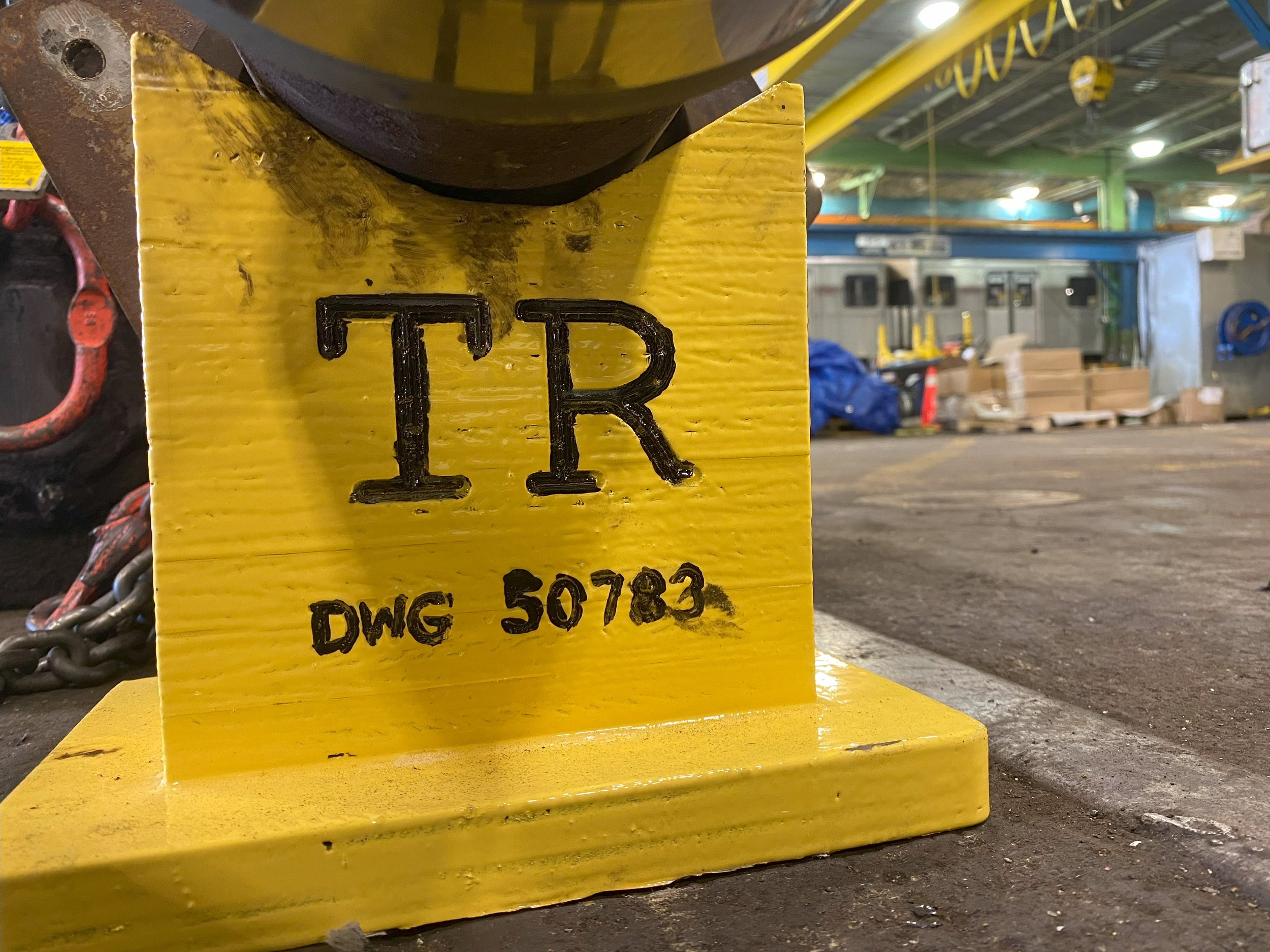Support Block Redesign for Toronto subway’s Axle
I designed the new Support Block for the Toronto Rocket Train. Four prototypes are being used by the Shop.
Old support block has developed a crack in the middle after years of cyclic stress.
I redesigned the support block with less acute angles, reducing the stress concentration, increasing lifespan of the block.
4 prototypes made of plywood are being used at the Greenwood Shop.
In a project focusing on the Toronto Rocket Train, I identified a design flaw in the V-shape block used to support the axle during gearbox removal. The original block had developed a crack due to years of cyclic loading, presenting a safety risk to technicians. After a comprehensive diagnostic, I redesigned the TR Axle Block with a rounded V-shape and three contact points for more even stress distribution, resulting in a CAD model approved by TTC's professional engineer. The new design is expected to considerably extend the block's lifespan, with 4 prototypes receiving initial positive feedback during testing.
Background:
The V-shape block is used to support the axle's weight during the stripping of the gearbox off the axle.
This block is used especially for the Toronto Rocket Train, the line 1 train.
I identified that the original design had a high concentration of stress at the trough of the V-shape, which led to the block's failure.
Problem:
The original block that holds the axle for the Toronto Rocket train has developed a crack in the middle after years of cyclic loading and repeated usage.
The crack in the block poses a safety threat to the technicians, and the block can no longer do its intended job.
Action:
Conducted thorough diagnostic to identify the root cause of the failure. Found that the original block's V-shape was too sharp, causing a high concentration of stress at the center.
Leveraged mechanical engineering principles to redesign the TR Axle Block. The new design features a more rounded V-shape and 3 points of contact with the axle, as opposed to the original two, thus distributing the stress more equally.
Created a CAD model and detailed production drawings using SolidWorks, which were reviewed by a professional engineer at the TTC.
Oversaw the manufacturing of 4 prototype blocks at the Harvey Shop, which where then delivered to the Greenwood Shop for field testing.
Inititaed a weekly check-in process with the technicians to gather feedback and monitor the condition of these prototypes.
Found the function of the original block.
Measured the original block's dimensions and found the functional distance from the ground to the axle.
Results:
The redesigned axle block is expected to increase its lifespan by a substantial amount, therefore reducing long-term maintenance costs.
Reduce stress concentrations by a factor of 12, effectively mitigating the issue that led to the original block's failure.
The 4 prototypes are currently in active testing, and initial feedback from technicians has been positive.







